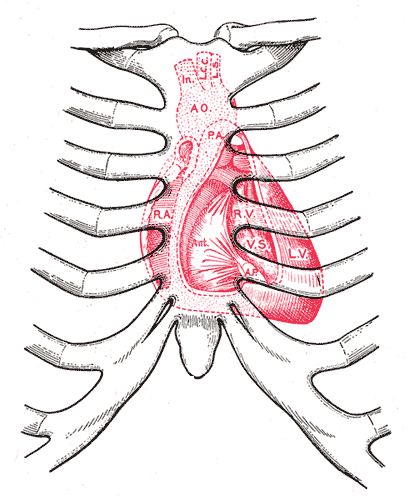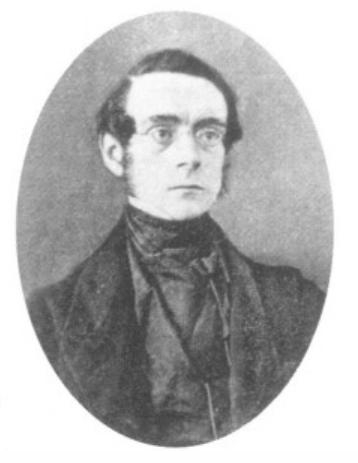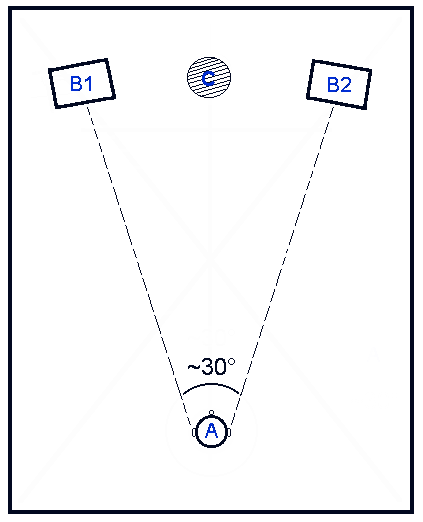|
Stethoscope
The stethoscope is a medical device for auscultation, or listening to internal sounds of an animal or human body. It typically has a small disc-shaped resonator that is placed against the skin, and one or two tubes connected to two earpieces. A stethoscope can be used to listen to the sounds made by the heart, lungs or intestines, as well as blood flow in arteries and veins. In combination with a manual sphygmomanometer, it is commonly used when measuring blood pressure. Less commonly, "mechanic's stethoscopes", equipped with rod shaped chestpieces, are used to listen to internal sounds made by machines (for example, sounds and vibrations emitted by worn ball bearings), such as diagnosing a malfunctioning automobile engine by listening to the sounds of its internal parts. Stethoscopes can also be used to check scientific vacuum chambers for leaks and for various other small-scale acoustic monitoring tasks. A stethoscope that intensifies auscultatory sounds is called a phonen ... [...More Info...] [...Related Items...] OR: [Wikipedia] [Google] [Baidu] |
René Laennec
René-Théophile-Hyacinthe Laennec (; 17 February 1781 – 13 August 1826) was a French physician and musician. His skill at carving his own wooden flutes led him to invent the stethoscope in 1816, while working at the Hôpital Necker. He pioneered its use in diagnosing various chest conditions. He became a lecturer at the Collège de France in 1822 and professor of medicine in 1823. His final appointments were that of head of the medical clinic at the Hôpital de la Charité and professor at the Collège de France. He went into a coma and subsequently died of tuberculosis on August 13, 1826 at age 45. Early life Laennec was born in Quimper (Brittany). His mother died of tuberculosis when he was five years old, and he went to live with his great-uncle the Abbé Laennec (a priest). As a child, Laennec became ill with lassitude and repeated instances of pyrexia. Laennec was also thought to have asthma. At the age of twelve, he proceeded to Nantes, where his uncle, ... [...More Info...] [...Related Items...] OR: [Wikipedia] [Google] [Baidu] |
Heart Auscultation
Heart sounds are the noises generated by the beating heart and the resultant flow of blood through it. Specifically, the sounds reflect the turbulence created when the heart valves snap shut. In cardiac auscultation, an examiner may use a stethoscope to listen for these unique and distinct sounds that provide important auditory data regarding the condition of the heart. In healthy adults, there are two normal heart sounds, often described as a ''lub'' and a ''dub'' that occur in sequence with each heartbeat. These are the first heart sound (S1) and second heart sound (S2), produced by the closing of the atrioventricular valves and semilunar valves, respectively. In addition to these normal sounds, a variety of other sounds may be present including heart murmurs, adventitious sounds, and gallop rhythms S3 and S4. Heart murmurs are generated by turbulent flow of blood and a murmur to be heard as turbulent flow must require pressure difference of at least 30 mm of Hg between ... [...More Info...] [...Related Items...] OR: [Wikipedia] [Google] [Baidu] |
Heart Sounds
Heart sounds are the noises generated by the beating heart and the resultant flow of blood through it. Specifically, the sounds reflect the turbulence created when the heart valves snap shut. In cardiac auscultation, an examiner may use a stethoscope to listen for these unique and distinct sounds that provide important auditory data regarding the condition of the heart. In healthy adults, there are two normal heart sounds, often described as a ''lub'' and a ''dub'' that occur in sequence with each heartbeat. These are the first heart sound (S1) and second heart sound (S2), produced by the closing of the atrioventricular valves and semilunar valves, respectively. In addition to these normal sounds, a variety of other sounds may be present including heart murmurs, adventitious sounds, and gallop rhythms S3 and S4. Heart murmurs are generated by turbulent flow of blood and a murmur to be heard as turbulent flow must require pressure difference of at least 30 mm of Hg between t ... [...More Info...] [...Related Items...] OR: [Wikipedia] [Google] [Baidu] |
Golding Bird
Golding Bird (9 December 1814 – 27 October 1854) was a British medical doctor and a Fellow of the Royal College of Physicians. He became a great authority on kidney diseases and published a comprehensive paper on urinary deposits in 1844. He was also notable for his work in related sciences, especially the medical uses of electricity and electrochemistry. From 1836, he lectured at Guy's Hospital, a well-known teaching hospital in London and now part of King's College London, and published a popular textbook on science for medical students called ''Elements of Natural Philosophy''. Having developed an interest in chemistry while still a child, largely through self-study, Bird was far enough advanced to deliver lectures to his fellow pupils at school. He later applied this knowledge to medicine and did much research on the chemistry of urine and of kidney stones. In 1842, he was the first to describe oxaluria, a condition which leads to the formation of a particul ... [...More Info...] [...Related Items...] OR: [Wikipedia] [Google] [Baidu] |
David Littmann
David Littmann (July 28, 1906 – January 1, 1981) was an American cardiologist born in Chelsea, Massachusetts (born to Ukrainian immigrants from Novogrod Wolyn aka Zwill Ukraine (formally the Russian Empire), Issac Litman and Sadie Zewat Litman) and Harvard Medical School professor and researcher. The name Littmann is well known in the medical field for the patented ''Littmann Stethoscope'' reputed for its acoustic performances for auscultation Auscultation (based on the Latin verb ''auscultare'' "to listen") is listening to the internal sounds of the body, usually using a stethoscope. Auscultation is performed for the purposes of examining the circulatory and respiratory systems (hea .... With Gustev Machlup, Dr. David Littmann founded ''Cardiosonics, Inc.'' to sell his stethoscopes. At that time the stethoscope line consisted of two key models, the doctor's stethoscope and the nurse's stethoscope. 3M acquired the stethoscope company on April 1, 1967, and hired Dr. ... [...More Info...] [...Related Items...] OR: [Wikipedia] [Google] [Baidu] |
Auscultation
Auscultation (based on the Latin verb ''auscultare'' "to listen") is listening to the internal sounds of the body, usually using a stethoscope. Auscultation is performed for the purposes of examining the circulatory and respiratory systems (heart and breath sounds), as well as the alimentary canal. The term was introduced by René Laennec. The act of listening to body sounds for diagnostic purposes has its origin further back in history, possibly as early as Ancient Egypt. (Auscultation and palpation go together in physical examination and are alike in that both have ancient roots, both require skill, and both are still important today.) Laënnec's contributions were refining the procedure, linking sounds with specific pathological changes in the chest, and inventing a suitable instrument (the stethoscope) to mediate between the patient's body and the clinician's ear. Auscultation is a skill that requires substantial clinical experience, a fine stethoscope and good listening s ... [...More Info...] [...Related Items...] OR: [Wikipedia] [Google] [Baidu] |
Sphygmomanometer
A sphygmomanometer ( ), a blood pressure monitor, or blood pressure gauge, is a device used to measure blood pressure, composed of an inflatable cuff to collapse and then release the artery under the cuff in a controlled manner, and a mercury (element), mercury or Pressure measurement#Aneroid, aneroid manometer to measure the pressure. Manual sphygmomanometers are used with a stethoscope when using the Auscultation, auscultatory technique. A sphygmomanometer consists of an inflatable cuff, a measuring unit (the Pressure measurement#Liquid column (manometer), mercury manometer, or aneroid gauge), and a mechanism for inflation which may be a manually operated bulb and valve or a pump operated electrically. Types Both manual and digital meters are currently employed, with different trade-offs in accuracy versus convenience. Manual A stethoscope is required for auscultation (#A stethoscope is required for auscultation (see below), see below). Manual meters are best used by trai ... [...More Info...] [...Related Items...] OR: [Wikipedia] [Google] [Baidu] |
Medicine
Medicine is the science and practice of caring for a patient, managing the diagnosis, prognosis, prevention, treatment, palliation of their injury or disease, and promoting their health. Medicine encompasses a variety of health care practices evolved to maintain and restore health by the prevention and treatment of illness. Contemporary medicine applies biomedical sciences, biomedical research, genetics, and medical technology to diagnose, treat, and prevent injury and disease, typically through pharmaceuticals or surgery, but also through therapies as diverse as psychotherapy, external splints and traction, medical devices, biologics, and ionizing radiation, amongst others. Medicine has been practiced since prehistoric times, and for most of this time it was an art (an area of skill and knowledge), frequently having connections to the religious and philosophical beliefs of local culture. For example, a medicine man would apply herbs and say prayers for healing, o ... [...More Info...] [...Related Items...] OR: [Wikipedia] [Google] [Baidu] |
Blood Pressure
Blood pressure (BP) is the pressure of circulating blood against the walls of blood vessels. Most of this pressure results from the heart pumping blood through the circulatory system. When used without qualification, the term "blood pressure" refers to the pressure in the large arteries. Blood pressure is usually expressed in terms of the systolic pressure (maximum pressure during one heartbeat) over diastolic pressure (minimum pressure between two heartbeats) in the cardiac cycle. It is measured in millimeters of mercury ( mmHg) above the surrounding atmospheric pressure. Blood pressure is one of the vital signs—together with respiratory rate, heart rate, oxygen saturation, and body temperature—that healthcare professionals use in evaluating a patient's health. Normal resting blood pressure, in an adult is approximately systolic over diastolic, denoted as "120/80 mmHg". Globally, the average blood pressure, age standardized, has remained about the same since 1 ... [...More Info...] [...Related Items...] OR: [Wikipedia] [Google] [Baidu] |
Sound Localization
Sound localization is a listener's ability to identify the location or origin of a detected sound in direction and distance. The sound localization mechanisms of the mammalian auditory system have been extensively studied. The auditory system uses several cues for sound source localization, including time difference and level difference (or intensity difference) between the ears, and spectral information. These cues are also used by other animals, such as birds and reptiles, but there may be differences in usage, and there are also localization cues which are absent in the human auditory system, such as the effects of ear movements. Animals with the ability to localize sound have a clear evolutionary advantage. How sound reaches the brain Sound is the perceptual result of mechanical vibrations traveling through a medium such as air or water. Through the mechanisms of compression and rarefaction, sound waves travel through the air, bounce off the pinna and concha of the exte ... [...More Info...] [...Related Items...] OR: [Wikipedia] [Google] [Baidu] |
Ear Trumpet
An ear trumpet is a tubular or funnel-shaped device which collects sound waves and leads them into the ear. They were used as hearing aids, resulting in a strengthening of the sound energy impact to the eardrum and thus improved hearing for a deaf or hard-of-hearing individual. Ear trumpets were made of sheet metal, silver, wood, snail shells or animal horns. They have largely been replaced in wealthier areas of the world by modern hearing aid technology that is much smaller and less obtrusive, albeit more expensive. A sound trumpet does not "amplify" sound. It takes the sound power received over a large area and concentrates it into a smaller area. The received sound is louder, but no power has been created in the process. History The use of ear trumpets for the partially deaf dates back to the 17th century.Howard, Alexander. "Hearing Aids: Smaller and Smarter." New York Times, November 26, 1998. The earliest description of an ear trumpet was given by the French Jesuit priest a ... [...More Info...] [...Related Items...] OR: [Wikipedia] [Google] [Baidu] |
Philips
Koninklijke Philips N.V. (), commonly shortened to Philips, is a Dutch multinational conglomerate corporation that was founded in Eindhoven in 1891. Since 1997, it has been mostly headquartered in Amsterdam, though the Benelux headquarters is still in Eindhoven. Philips was formerly one of the largest electronics companies in the world, but is currently focused on the area of health technology, having divested its other divisions. The company was founded in 1891 by Gerard Philips and his father Frederik, with their first products being light bulbs. It currently employs around 80,000 people across 100 countries. The company gained its royal honorary title (hence the ''Koninklijke'') in 1998 and dropped the "Electronics" in its name in 2013, due to its refocusing from consumer electronics to healthcare technology. Philips is organized into three main divisions: Personal Health (formerly Philips Consumer Electronics and Philips Domestic Appliances and Personal Care), Connecte ... [...More Info...] [...Related Items...] OR: [Wikipedia] [Google] [Baidu] |

.jpg)









